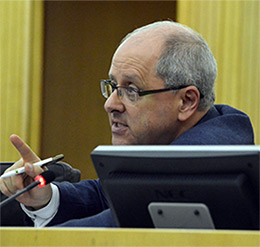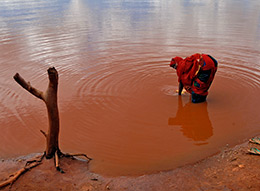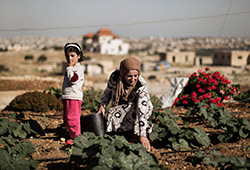“We must produce more food with less water” – FAO land and water chief on water scarcity challenge
18 April 2017, Rome – Water scarcity is a growing threat that, unless dealt with, will set back the global push to build a fairer, more-sustainable world. To ensure that the problem doesn’t prevent agriculture from providing food security to a growing population, FAO and partners launched the Global Framework on Water Scarcity in Agriculture at the Marrakech climate meeting (COP 22) last November.

Ahead of the first meeting of the partners at FAO headquarters in Rome on 19-20 April 2017, Eduardo Mansur, Director of FAO’s Land and Water Division, explains the threats water scarcity poses, what agriculture can do about it, and how the framework will help.
How big a threat does water scarcity pose?
Eduardo Mansur: Not a single living organism can survive without water, and we certainly cannot grow enough food for the world without sufficient quantities of it. Unfortunately, this is a situation we may soon face.
Population growth, urbanization, industrial development, changing diets and wastefulness have led to significant increases in water use. At the same time, climate change is altering weather patterns and so water availability.
As a result, water is growing scarce. In the Middle East and North Africa, fresh water availability has fallen by two-thirds in the past 40 years. Bolivia declared a water emergency late last year. Drought is threatening to turn to famine in several East African nations.
In every case, agriculture is being hit hard by these water shortages. And it is only predicted to get worse.
Climate change will further reduce water availability. The world will add another 2 billion people by 2050, further stressing water supplies. Somehow agriculture will need to produce an estimated 50 per cent more food to meet the needs of these extra people, all with less water.
Clearly, we need to find urgent solutions.
How exactly can agriculture ensure food security in a water-scarce world?
Eduardo Mansur: Agriculture suffers from water scarcity: irrigated agriculture provides 40 percent of global crops and up to 84 percent of the economic impact of drought falls on the sector.

But it also causes water scarcity, accounting for 70 percent of freshwater withdrawals. This provides an opportunity – not only for agriculture itself, but for the whole sustainable development agenda.
Essentially, we must produce more food with less water. By doing so, we can help achieve the commitments made under the Paris Agreement to fight climate change. And we can contribute to the sustainable development goals, in particular goal 2 on zero hunger, goal 6 on access to clean water and sanitation, and goal 12 on sustainable consumption.
This is entirely possible through crop choices, irrigation methods, livestock production practices, more efficient use of water in food value chains, reductions in general food loss and waste, and changes in behavior of water users.
Making the right decisions in these areas can reduce water demand, protect water quality and adapt agriculture to climate change.
How will the global framework help achieve this?
Eduardo Mansur: Humanity has learned many lessons down the years, but the most important is that big tasks can only be tackled collectively.

In this case, we need actions and strategies that address water scarcity, agricultural production, food security and climate change as an integrated approach.
The Global Framework will bring together key players from across the globe to design and implement these integrated strategies – ensuring that, by working together, water scarcity doesn’t set back our ambitious vision of a future of peace and plenty for all.
The first meeting of the partners will set out a new vision and priority actions on water scarcity that will support a future of peace and plenty for all.
